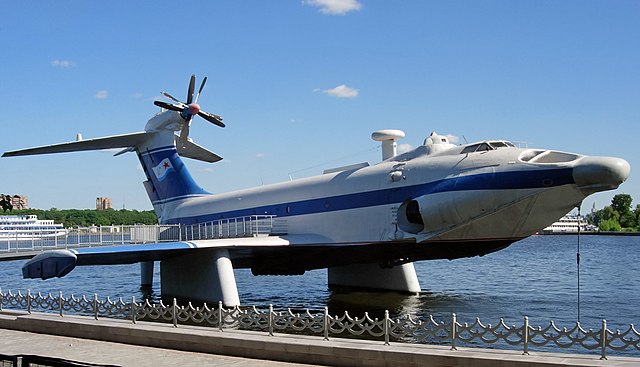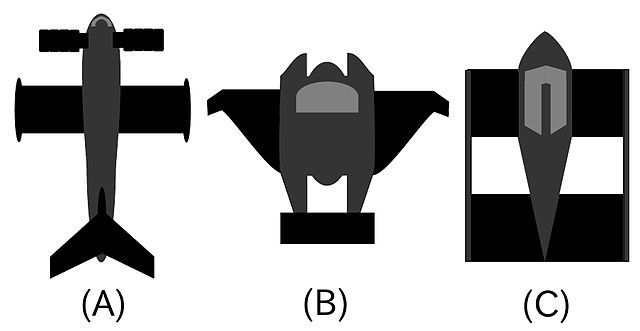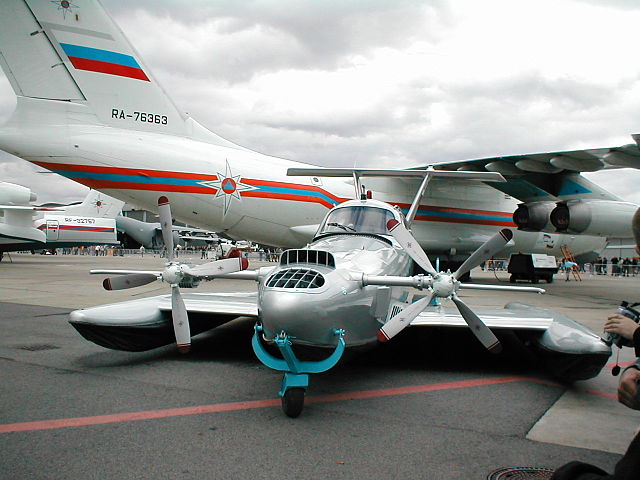The KM, known colloquially as the Caspian Sea Monster, was an experimental ground effect vehicle developed in the Soviet Union in the 1960s by the Central Hydrofoil Design Bureau. The KM began operation in 1966, and was continuously tested by the Soviet Navy until 1980 when it crashed into the Caspian Sea.
Caspian Sea Monster
The Caspian Sea Monster at Kaspiysk photographed with a KH-8 reconnaissance satellite in 1968. It remained the heaviest aircraft in the world throughout its 15-year service life, and served as the basis for Lun's development. Unlike the Lun, the KM featured a constant-chord main wing and a stabilizer with notable dihedral (visible in the image as a difference in brightness between the left and right side of the stabilizer) and an unswept aft trailing edge.
A ground-effect vehicle (GEV), also called a wing-in-ground-effect (WIG), ground-effect craft, wingship, flarecraft or ekranoplan, is a vehicle that is able to move over the surface by gaining support from the reactions of the air against the surface of the earth or water. Typically, it is designed to glide over a level surface by making use of ground effect, the aerodynamic interaction between the moving wing and the surface below. Some models can operate over any flat area such as frozen lakes or flat plains similar to a hovercraft.
Ekranoplan A-90 Orlyonok
WIG-wings configurations: (A) Ekranoplan; (B) Reverse-delta wing; (C) Tandem wing.
A Russian light ekranoplan Aquaglide-2
Artist's concept of a Lun-class ekranoplan in flight






